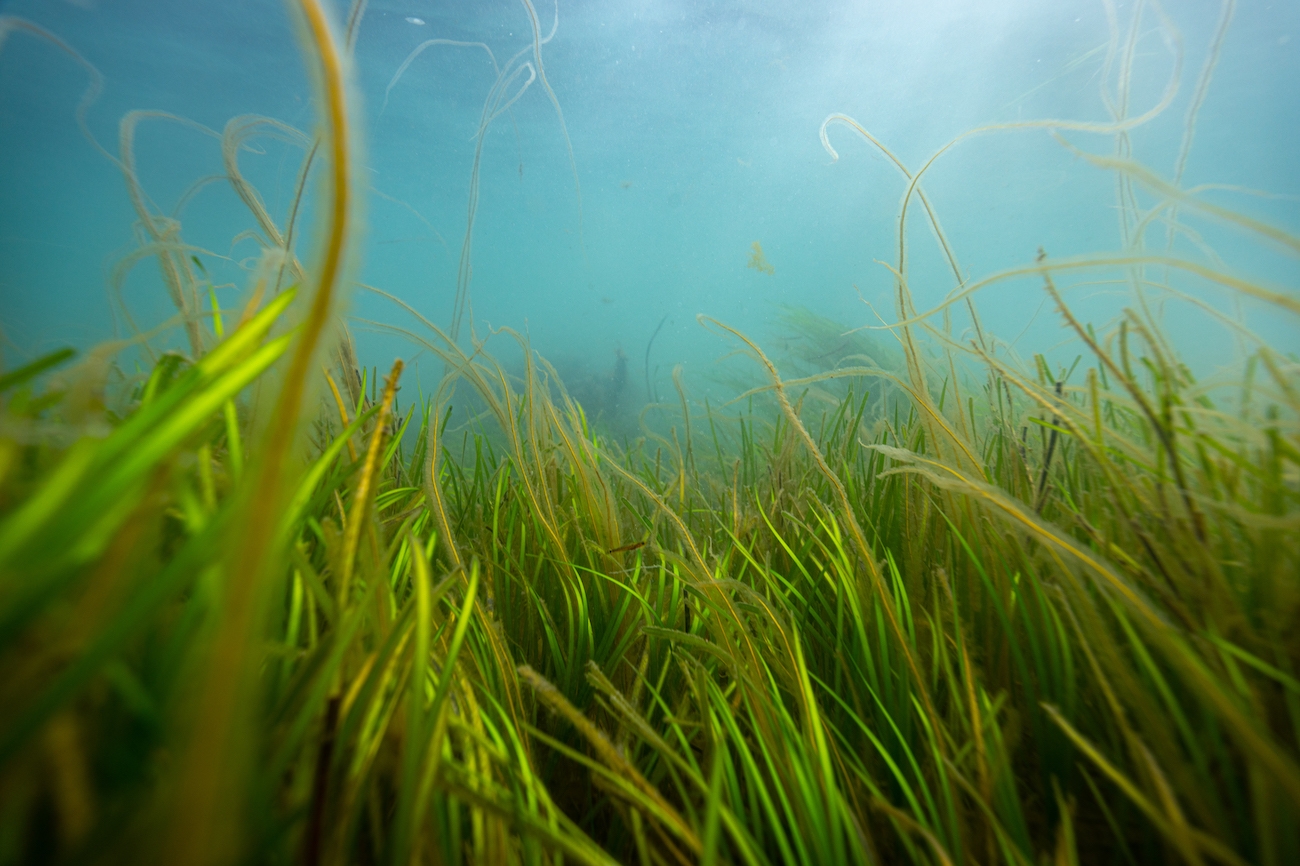
Blue Carbon: The Role of Our Ocean in the Fight Against the Climate Emergency
By Alex Rogers, Science Director, REV Ocean & Steve Trent, CEO and Co-Founder, Environmental Justice Foundation
The ocean is our greatest ally in the fight against the climate emergency. The EU now has a golden opportunity to protect people, wildlife and our planet by supporting it.
We are currently facing the dual emergencies of climate change and biodiversity loss. As we write this, heatwaves in Pakistan are reaching 50oC, temperatures that can rapidly lead to heat exhaustion and death from hyperthermia in humans, and a mega-drought in Chile is into its 13th year. Despite the importance of keeping global warming to below 2oC and ideally below 1.5oC, global CO2 emissions rebounded to their highest ever levels in 2021.
The climate emergency is driving the mass migration of marine life towards the poles and massive mortalities in key marine ecosystems such as coral reefs and seagrass beds. Coupled with other direct impacts on marine life from overfishing, destructive fishing techniques, coastal development and pollution, it is not surprising that scientists are predicting the sixth mass extinction.
The importance of ‘green carbon’ stored on land, such as in forests, is widely recognised by the public and governments and it is included in many commitments under the Paris Climate Accord. However, blue carbon, the carbon stored in coastal and marine ecosystems, has not been fully recognised, even though the ocean is the largest active carbon sink and store in the Earth system.
Blue carbon
Coastal ecosystems like mangrove forests and seagrass beds are known for their rich and diverse wildlife, and they also store up to ten times more carbon than an equivalent area of tropical rainforest. Yet since the 1970s the global area of mangrove forests has declined by about 40% and saltmarshes by 60%. This has a double impact, because not only can they no longer take carbon out of the atmosphere, but what they were storing is released.
Beyond coastal ecosystems, scientists have discovered that the continental shelves of coastal states and the deep sea harbour vast stores of carbon dioxide, dwarfing coastal stocks by up to two orders of magnitude. Marine animals like sperm whales have been discovered to play key roles in the carbon cycle, feeding on squid in the deep sea but defecating when they return to the surface, fertilising the ocean in the process.
Every day, the world’s largest migration takes place, where small fish, crustaceans, squid and jellyfish migrate hundreds of metres from the depths to the surface as it gets dark, feeding and then returning to the depths later. This actively transports carbon into the deep ocean where it is stored for hundreds or thousands of years.
However, we are putting this life support system at risk. Ever-expanding seabed trawling may release half a billion tonnes of CO2 each year by disturbing the carbon stores of continental shelves globally. In Europe, 79% of the coastal seabed and 43% of the shelf and slope area is physically disturbed, mainly as a result of bottom trawling.
Two things are therefore clear: we are driving a climate and ecological emergency with our treatment of the ocean, and we must map and protect blue carbon habitats to reverse this emergency.
Act now
Only 3% of all the key ocean habitats are within fully protected marine protected areas (MPAs) and some key habitats have no representation at all. Carbon uptake and storage by marine ecosystems must now be considered in every aspect of ocean management, from coastal development to fisheries management and shipping. This means improving our understanding of ocean ecosystems and their contribution to the carbon cycle is absolutely fundamental to effective climate and biodiversity policy.
In May, the European Parliament adopted a resolution calling for the EU to launch and fund scientific research programmes to map carbon-rich marine habitats in EU waters. The resolution calls on this research to be the scientific basis for new strictly protected MPAs, which would be free of destructive fishing activity such as bottom trawling.
Now, EU negotiations are ongoing on how – and whether – this will be funded. Strong policy to map and protect blue carbon habitats is a golden opportunity to deliver on the European Green Deal, the Paris Agreement and the Marine Strategy Framework Directive, Europe’s efforts to improve marine ecosystem health.
It is time to change the course of the Anthropocene, where we are wiping out nature and the critical functions it performs to support all life on Earth. Instead, we must ensure a sustainable human society that protects and restores the planet and its ecosystems. Making blue carbon a key part of overarching EU policy to protect the ocean can support sustainable fisheries, climate change mitigation and biodiversity simultaneously.
This piece was originally published by EURACTIV and is shared here with permission.
SIGN UP FOR OUR EMAILS AND STAY UP TO DATE WITH EJF

